All of my children were raised Catholic, went to Sunday Mass, received all their Sacraments, and were educated from K-12 in Catholic schools. And yet, when a crisis arises in their lives, they call me for prayer.
Now, with families of their own, I’m not sure why they are reticent to pray. I feel like somewhere, somehow, along the way, culture has influenced them that prayer is ineffectual and so not something to bother with. Prayers have taken on the cultural value of superstition and platitude.
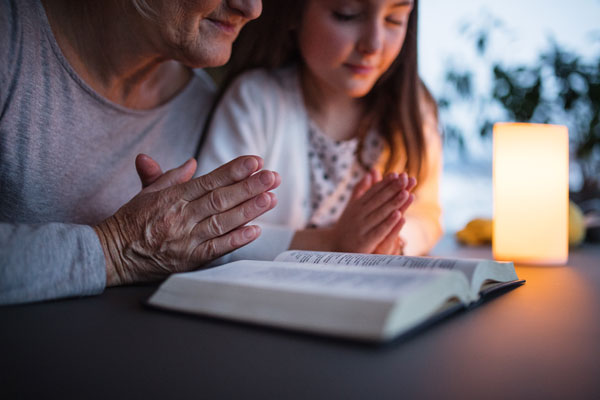 How often do we hear now, in the shadow of some unthinkable tragedy, “We don’t want your thoughts and prayers,” making it clear that many believe prayers won’t change things, won’t fix what’s happened, or make it better?
How often do we hear now, in the shadow of some unthinkable tragedy, “We don’t want your thoughts and prayers,” making it clear that many believe prayers won’t change things, won’t fix what’s happened, or make it better?
In some ways, it is easy to understand the frustration of those who are looking for answers to tragedy and looking for changes that will prevent tragedy in the future. We all know that prayers are not always answered the way we hoped for, and the natural result is disappointment and discouragement.
But it is important to understand that the purpose of prayer is not just to have our prayers answered when we want something. Prayer is meant first and foremost to nurture our relationship with God, to be in frequent conversation with God who loves us, and to help keep our hearts and minds open to God’s voice.
Prayer also builds our humility, which is not a weakness but a recognition that we are not God. We do not have all the answers, nor can we ensure that tragedies and losses will not happen. Part of that humility is the recognition that there are many times when we need to ask for forgiveness. Prayer is a means to that honesty before God.
Pope Francis says, “Praying is opening the door to the Lord so that he can do something. If we close the door, God can do nothing,” By doing something, the Holy Father is not just referring to God giving us that for which we ask, but in providing guidance in making decisions, moving us along the right path, inspiring us with hope and strength in overcoming obstacles, and forming us in faith.
As the summer moves along, there are several steps we can take to improve our prayer lives and help our students to do the same when school resumes.
Ask God for help in praying. Follow in the footsteps of the Apostle who reached out to Jesus and said, “Lord, teach us to pray just as John taught his disciples” (Luke 11:1). We can ask God to not only teach us to pray, but to inspire us through the Holy Spirit to pray because sometimes getting started is the hardest step to take.
Pray the name of Jesus. In one of my jobs, my office mate was a nun who prayed throughout the day by saying, “Jesus, help me.” Often it was in relation to computer problems, but she prayed those words so frequently it became like breathing, and I’ve never met a person more at peace. Saint Philip Neri taught, “The name of Jesus, pronounced with reverence and affection, has a kind of power to soften the heart.”
Pray continually. Well, that sounds like an impossible task, but it doesn’t mean sitting in your room or the church pew all day and offering prayers to God. Saint John Chrysostom preached that prayer is a state of mind and should serve as the foundation of our daily lives, taking place “even while walking in public or strolling alone, or seated in your shop, while buying or selling, or even while cooking.”
Pray for others. A close family member often posts on Facebook, “I don’t do thoughts and prayers, but send me some positive energy.” Recently, she developed Covid. I messaged her on Facebook, saying, “I know you don’t do thoughts and prayers, but I do, so I’m praying every day for your recovery.” Pope Francis said, “The first way to pray for someone is to speak to God about that person. If we do this frequently, each day, our hearts are not closed but open to others. Praying for other people is the first way to love them and be close to them in a concrete way.” And it’s a wonderful prayer practice for children.
In one of his many teachings on prayer, Pope Francis shared a beautiful thought that has stayed with me as a choral singer: “Prayer is a kind of musical staff, where we arrange the melody of our lives. It is not in contrast with daily work; it does not contradict the many small obligations and appointments; if anything, it is the place where every action finds its meaning, it is reason and it is peace.”
An excellent home and classroom resource is Our Family Prays: Catholic Prayers and Traditions, which is a collection of rituals, blessings, prayers, and traditions for families striving to keep prayers at the heart of their homes.
 About the Author
About the AuthorMary Regina Clifford Morrell, mother of six and grandmother to nine, is a Catholic journalist, author, and syndicated columnist who has served the dioceses of Metuchen and Trenton, New Jersey, and RENEW International in the areas of catechesis and communication.
Product Highlight
Our Family Prays & Catholic Prays and Practices
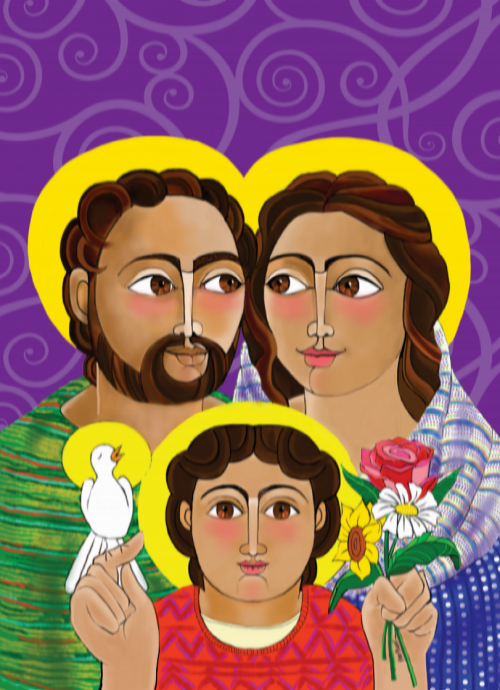 Our Family Prays is a collection of rituals, blessings, prayers, and traditions meant to encourage and inspire Catholic families to keep prayer at the heart of their homes. It is organized by the seasons of the liturgical year and includes religious traditions and celebrations from around the world.
Our Family Prays is a collection of rituals, blessings, prayers, and traditions meant to encourage and inspire Catholic families to keep prayer at the heart of their homes. It is organized by the seasons of the liturgical year and includes religious traditions and celebrations from around the world.
This small book, Catholic Prayers and Practices, including The Order of Mass, contains traditional practices and prayers that unite us as Catholics. It is designed to support you in your faith life, and it can assist you in helping the younger members of our Church learn, grow and live as active members of the Catholic community.
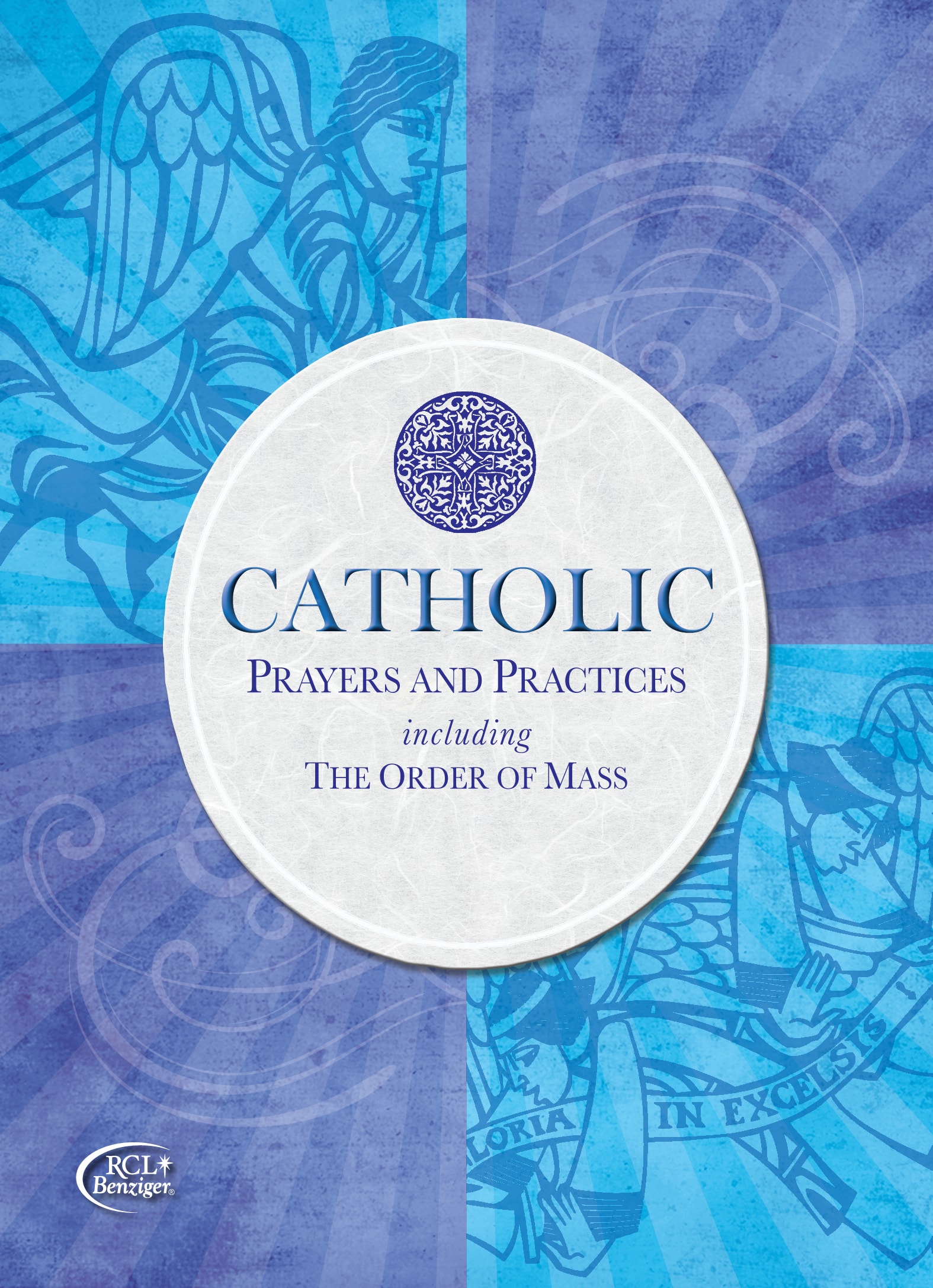 This resource can be used for private, family, or communal prayer. The Order of Mass section incorporates the language of the revised Roman Missal. Share the faith by giving copies of this book to others. In this way, you are sharing in the ministry of our Lord, Jesus Christ, who called us to be his disciples and to share the Good News with all people.
This resource can be used for private, family, or communal prayer. The Order of Mass section incorporates the language of the revised Roman Missal. Share the faith by giving copies of this book to others. In this way, you are sharing in the ministry of our Lord, Jesus Christ, who called us to be his disciples and to share the Good News with all people.
As the next school year comes closer, begin to plan for better parent meetings. Demonstrate that you value parents as co-missioners in passing on the faith. Communicate in words and deeds that Jesus—through you—loves them and is listening to them. Prepare a comfortable and attractive meeting space. If your parent meetings are in a classroom, rearrange the desks into friendly circles or provide adult-sized chairs. Have a meaningful opening and closing prayer.
 Make the meeting a conversation rather than a lecture. Provide opportunities for parents to talk to you and to one another about questions that matter. Some conversation starters:
Make the meeting a conversation rather than a lecture. Provide opportunities for parents to talk to you and to one another about questions that matter. Some conversation starters:
- How is the world different now than when you were growing up?
- What do you hope your children will remember that you were trying to teach them?
- What are your biggest worries for your children now?
- What difference has technology made in your family’s lifestyle?
- What are key values that you want to pass on to your children?
Blest Are We Faith in Action Director’s Resource, pp. 71-72, has more plans for parent gatherings.
Resources for supporting parents and families. Your faith formation programs have excellent resources for engaging with parents and helping them share the Good News at home.
- Blest Are We Faith in Action makes family faith formation a priority, starting each chapter with Take Home pages. Reinforce the efforts of parents by echoing the messages from the Take Home pages in your classroom lessons. Reviewing the Take Home pages in the classroom helps children understand that you and their parents are partners in their faith formation.
- Stay in touch with parents by sharing links to digital versions of the Take Home pages and video resources, available in the Grade Level Organizer pages of your Flourish website.
- Family Life student books and Parent Connection booklets help parents know how to talk with their children. Share links to Catholic Parenting 101 and Videos from Experts, all found in the Grade Level Organizer in Flourish.
Not all parents will be as engaged as you hope. Your students come from homes with a wide variety of church practice and affiliation. Yet, their parents have chosen your Catholic school or parish program to be their partner in guiding their children’s moral and faith development. We need to walk alongside parents with humility and patience and develop what Pope Francis has called a “spirituality of accompaniment.” Given time and encouragement, parents who have spent years on the edges of parish life may be inspired to become more actively involved.
Celebrate each step parents take toward a stronger family life and deeper faith. Pope Francis said that he dreams of a Church with its arms wide open—like the arms of the father of the Prodigal Son—where there is a place for others, no matter what is happening in their lives (The Joy of the Gospel, no. 47). Let this also be our dream for the parents of our students.
 About the Author
About the AuthorDr. Lauri Przybysz specializes in equipping families to live their vocation to be domestic churches and signs of God’s love. Lauri received the Doctor of Ministry from the Catholic University of America, and she has been both a Catholic middle school religion teacher and a faith formation coordinator at the archdiocesan and parish levels. She is the mother of six children and grandmother of 21.
Product Highlight
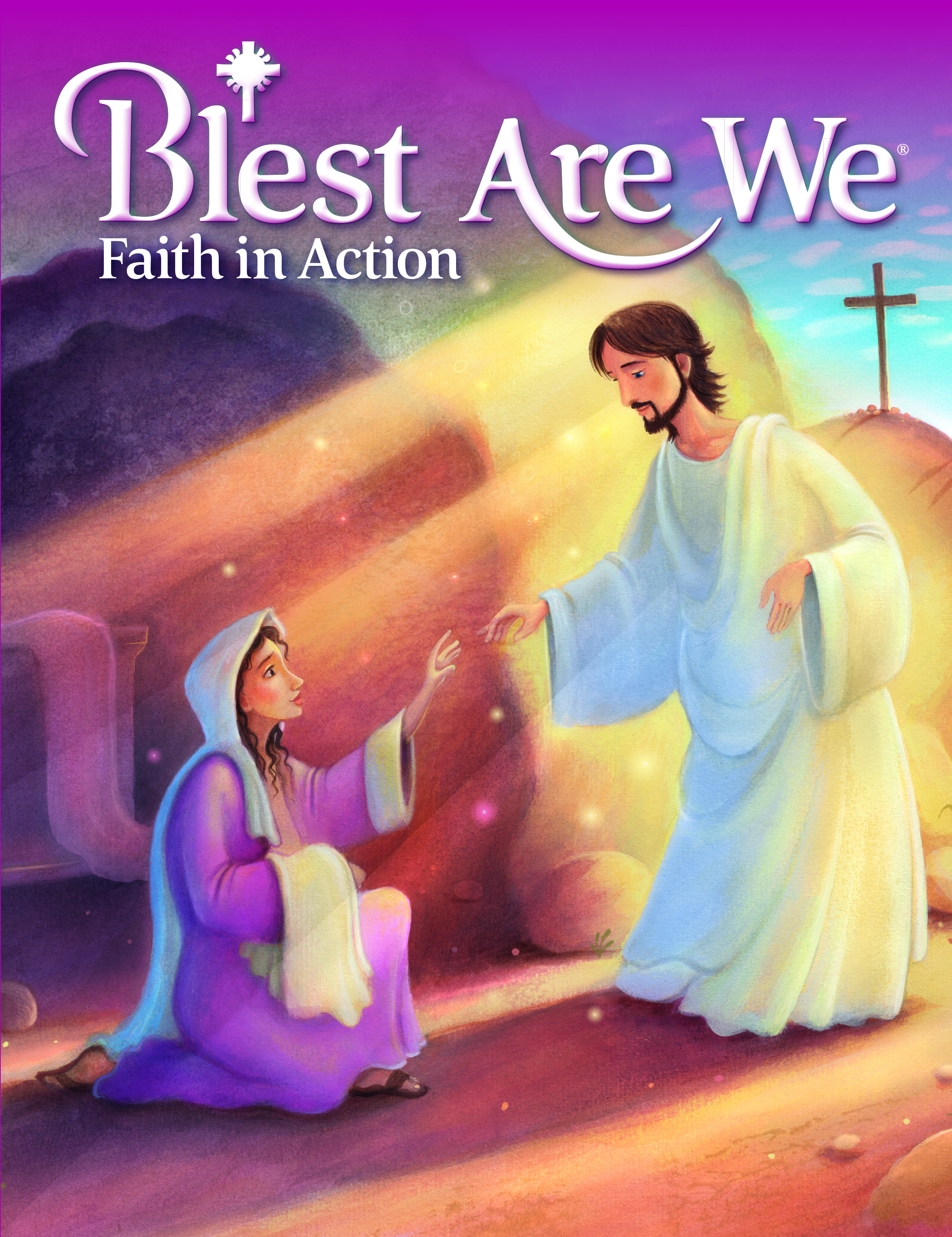 Blest Are We Faith In Action for Schools
Blest Are We Faith In Action for Schools
Give students a solid foundation to put faith into action!
RCL Benziger is your Complete Solution for distance, hybrid, and classroom learning, providing you with engaging, high-quality Catholic religious education resources for the classroom and the home. We are committed to providing outstanding resources for students, teachers, and families no matter what learning environment you find yourself in.
Blest Are We Faith in Action - School Edition Grades K-8
The Blest Are We Faith in Action religious education program engages children, youth, and their families in learning what Catholics believe, how Catholics worship, how Catholics pray, and how Catholics live. Our technology-enhanced learning resources, including eGuides, eBooks, eAssessments, and online chapter reviews, expand student learning opportunities and teacher flexibility.
Prayer is turning our minds and hearts to God. In our classroom lessons, we rightly emphasize the importance of prayer in the life of a Christian. Students pray together in class, at Mass, and at seasonal events. Our dearest hope is that these lessons will translate into lifelong prayerful faith when students are not in a school or parish setting. We want them to establish a habit of prayer that they take into adulthood.
How can we better motivate young people to turn to God and open their minds and hearts to him in their daily lives? What will increase the potential for prayer to become a habit?
Teach the benefits of daily prayer. Blest Are We Faith in Action teacher’s editions have an excellent summary of “Teaching Prayer” at T30 of each level. The fourth chapter of every unit of the student book centers on “How Catholics Pray” and instructions for setting up a classroom Prayer Center. Every chapter concludes with prayer.
Promote memorization of traditional Catholic prayers. Knowing some prayers by heart makes it easier to pray when we are feeling stressed or hurried. You will find short Catholic prayers at the beginning of student editions of Blest Are We Faith in Action, Be My Disciples, and Family Life.
Begin every class and event with prayer. When the teacher says, “Let us recall that we are in the holy presence of God,” it makes a difference to the students and the teacher. Some teachers even ring a little bell or chime. All are alerted that they are in a special space.
Practice. Propose an “on-your-own challenge” to pray one time each day outside of the classroom setting, over a set period of time. We Catholics already have such a habit-forming timeframe. We call it Lent! But don’t wait until Lent to do this exercise. Thirty days is a good target.
Prayer Partners. It helps to have a buddy when you are establishing any healthy habit. Partners should meet weekly to check in with each other about how they are doing with their resolution.
Ask students to suggest non-school times when they could pray.
- “When I arrive home, I will thank God before I eat my snack.”
- “When I shut down my computer for the night, I will remember God loves me.”
- “When my feet hit the floor in the morning, I will ask God to protect me.”
- “When I brush my teeth, I will thank God for my health or pray for someone who is sick.”
Have them write down their resolution on the inside cover of their faith formation book. After 30 days, ask students to reflect on their experience and invite them to continue to practice praying daily.
Resources for Home: Catholic Prayers and Practices. These handy, portable guides help young people learn, celebrate, and reference the prayers and practices of the Catholic faith. Available in bilingual and other languages.
 About the Author
About the AuthorDr. Lauri Przybysz specializes in equipping families to live their vocation to be domestic churches and signs of God’s love. Lauri received the Doctor of Ministry from the Catholic University of America, and she has been both a Catholic middle school religion teacher and a faith formation coordinator at the archdiocesan and parish levels. She is the mother of 6 children and grandmother of 21.
Product Highlight
Catholic Prayers and Practices 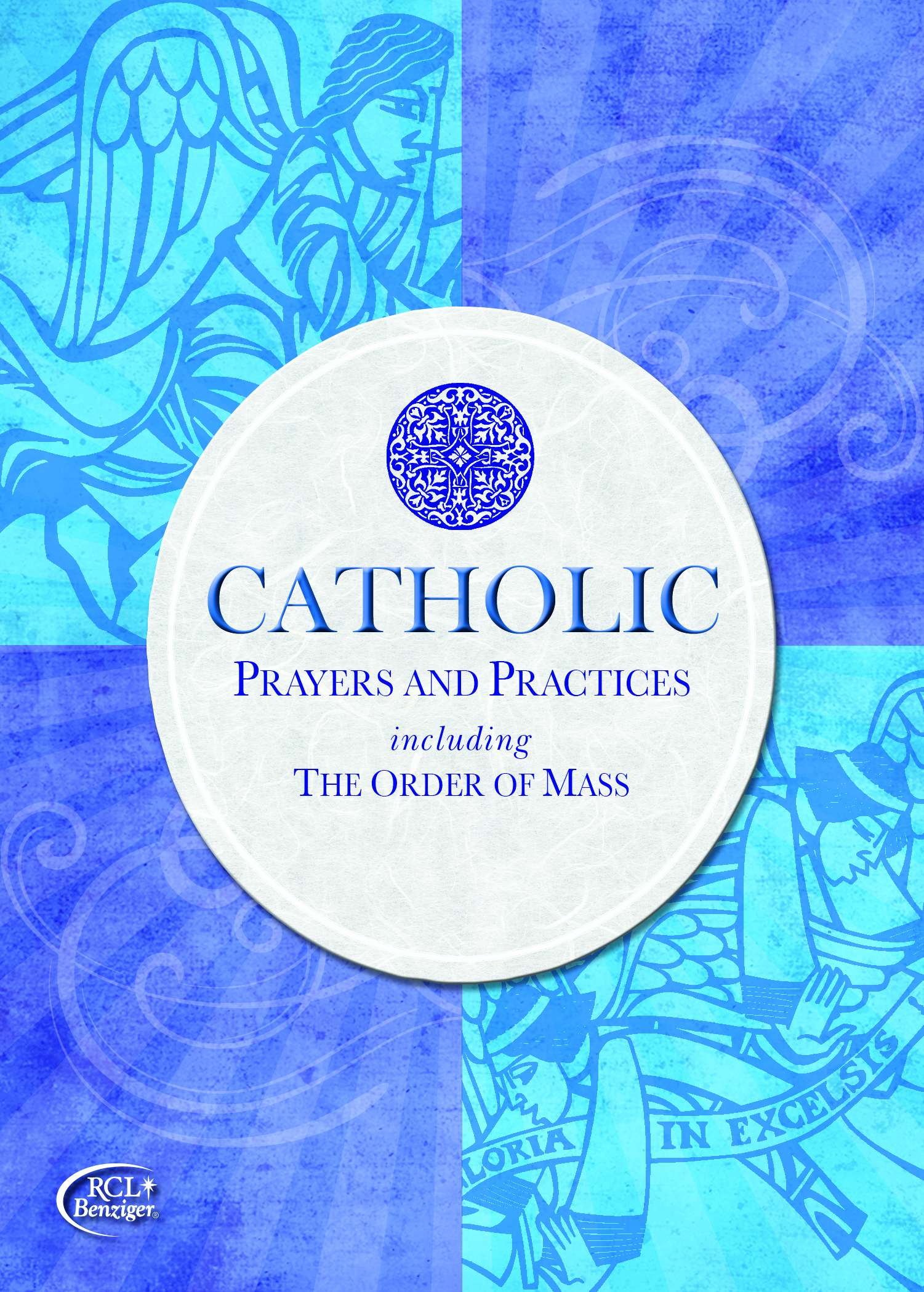
This small book, Catholic Prayers and Practices including The Order of Mass, contains traditional practices and prayers that unite us as Catholics. It is designed to support you in your faith life, and it can assist you in helping the younger members of our Church learn, grow and live as active members of the Catholic community.
This resource can be used for private, family, or communal prayer. The Order of Mass section incorporates the language of the revised Roman Missal. Share the faith by giving copies of this book to others. In this way, you are sharing in the ministry of our Lord, Jesus Christ, who called us to be His disciples and to share the Good News with all people.
I have no doubt that teachers often find themselves in a similar situation as parents when dealing with children – talking and no one is listening.
 “I may as well be talking to the lizard,” my daughter-in-law is sometimes heard to say.
“I may as well be talking to the lizard,” my daughter-in-law is sometimes heard to say.
She is in good company, not only with teachers but with the saints. Particularly, St. Anthony of Padua, who gave up a life of wealth and power to serve God as an Augustinian (until he became a Franciscan).
This much-loved saint and doctor of the Church never set out to be a preacher, but God had plans for him so preach he did, often to heretics.
On one occasion, after several days of preaching the Gospel, St. Anthony became frustrated with those who refused to listen. So, he took himself off to a place where the river emptied into the sea and began to preach to the fish, who proved to be a much more willing audience.
Legend says that the fish came to listen to St. Anthony in multitudes, with their heads out of the water and seeming to look intently at the saint. When the people in town heard about the miracle, they all came to witness it, including the heretics who refused to listen the first time. Many were converted.
St. Anthony had success in his preaching because he learned over many years the value of being open to God and the power of the Holy Spirit. Preaching had been a hidden talent that he only discovered when circumstances brought him to a time and place when he was asked to “say a few words.”
No one expected much of St. Anthony in this regard, as he lived a quiet, prayerful, simple life away from the limelight. But when God brought him to it, he opened his mouth, and holiness and profound wisdom flowed out.
Our children also have hidden talents, and as adults in their lives, we have the exceptional privilege of helping them discover the gifts God has given them. Discovering these gifts means finding their passion which will be a source of joy and satisfaction for them as adults.
With limited time in a classroom, what is the best way to go about it?
Be an encourager – Encourage curiosity. Throughout the school day, children will have an opportunity to participate in a variety of activities and tackle a variety of subjects. In these moments children may discover a new interest or talent. But sometimes, children are reticent to try unfamiliar activities or subjects. Some of this stems from a fear of failure. Helping children understand the value of failure as a stepping stone to success is a crucial milestone for keeping them engaged.
Be a listener – Children love to talk about the things that interest them. Pay attention. What keeps them engaged? Who are their heroes, and who do they admire? Encourage them to talk about why they admire those people. What character traits do they exhibit? Do they resemble the Gifts of the Holy Spirit – Wisdom, knowledge, understanding, counsel, fortitude, courage, awe?
Discuss the saints – The saints, all unique and differently gifted, are perfect examples of the many varied gifts and talents God gives to each of us. Choose a few who appear in your Blest Are We or Be My Disciples curriculum. Use the free RCL Benziger Saints Resource for more information on a particular saint, like Saint Anthony of Padua.
Thank God in prayer – Provide an opportunity for children to thank God for their many gifts, even if they have not yet discovered them all. Encourage them to give thanks for the gifts of others, as well, and remind them of Psalm 139:13-14: “You formed my inmost being; you knit me in my mother’s womb. I praise you because I am wonderfully made; wonderful are your works!”

Mary Regina Clifford Morrell, mother of six and grandmother to nine, is a Catholic journalist, author, and syndicated columnist who has served the dioceses of Metuchen and Trenton, New Jersey, and RENEW International in the areas of catechesis and communication.
Product Highlight
Blest Are We Faith in Action Scripture Videos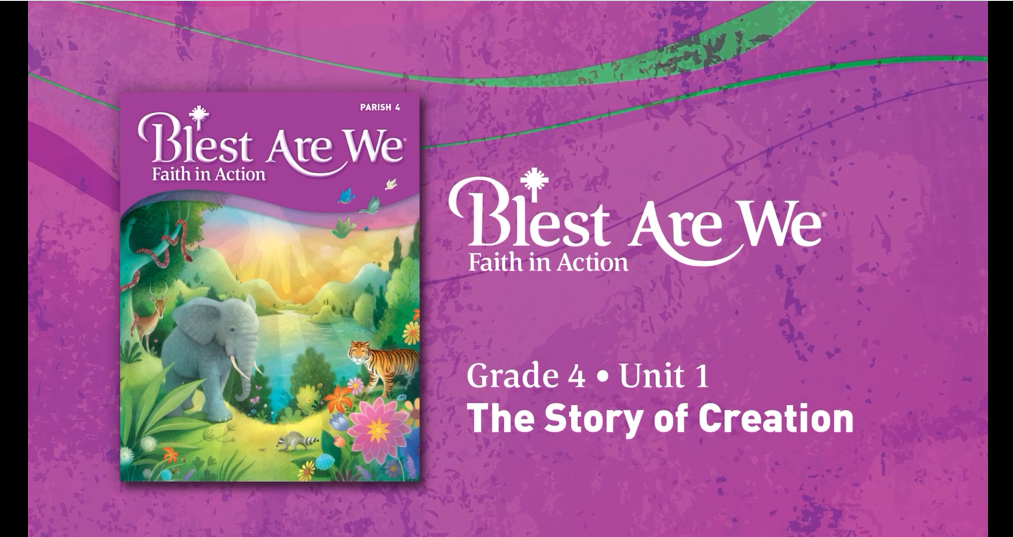
Religion Curriculum Grades 1-8
New for the Blest Are We Faith in Action Series – Scripture Videos for Grades 1-8!
Enjoy a selection of 40 Biblical scripture story videos that accompany the student lesson pages in our Blest Are We Faith in Action series. These Catholic Bible stories, saint stories, and parables of Jesus enhance the Catholic Faith lessons in your classroom. There are five unique scripture videos per grade level for students in grades 1-8.
Antarctica, which contains the South Pole, is the Earth's fifth largest and least populated continent with no permanent residents, averaging 1,000 in winter and 5,000 in summer. Some 98% of the continent is covered by ice. And yet, visitors to this inhospitable land will find a place to honor the Blessed Virgin Mary – the Chapel of Santa Maria Reina de Paz (Queen of Peace), built out of metal storage containers and located on the Chilean military base of King George's Island, Antarctica.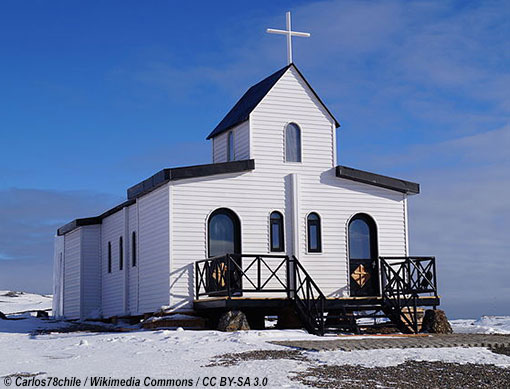
The chapel serves an average population of 100 and signifies the great love and devotion to Mary, as the Mother of God, that exists in even the most unexpected places. It stands in contrast to the Basilica of The National Shrine of Our Lady of Aparecida, Brazil, one of the largest churches in the world and one of an inestimable number dedicated to Mary under any one of her many titles.
Mary's titles stem from her relationship with Jesus, humanity, and the Church. Some titles are attributed to first use by saints, as in Mary Help of Christians, by St. John Chrysostom, and Stella Maris, Star of the Sea, by St. Jerome. Others arise from pious tradition or the geographic locations of the faithful.
In addition to Mary's many titles are the many faces of Mary, commemorated in thousands of Catholic churches and cathedrals around the world. Prominent in the United States is the Basilica of the National Shrine of the Immaculate Conception in Washington, which houses more than 80 chapels and oratories honoring the Mother of God and representing people from every corner of the globe.
 Among the Basilica representations of Mary are those that depict her as African, Austrian, Chinese, Cuban, Czech, Filipino, French, German, Guamanian, Hungarian, Indian, Irish, Italian, Korean, Latin American, Lebanese, Maltese, Polish, Slovakian, Slovenian and Vietnamese.
Among the Basilica representations of Mary are those that depict her as African, Austrian, Chinese, Cuban, Czech, Filipino, French, German, Guamanian, Hungarian, Indian, Irish, Italian, Korean, Latin American, Lebanese, Maltese, Polish, Slovakian, Slovenian and Vietnamese.
Students are most likely familiar with images of Mary with light skin and hair and blue eyes or a young Jewish girl with olive skin, brown hair, and eyes. They may also be familiar with images of Our Lady of Guadalupe, in which Mary appears as an Indian princess, or as Our Lady of Kibeho, a Madonna with black skin who spoke with schoolgirls in a small Rwandan town in Africa.
The Marian month of May is an excellent time to introduce students to some of the many other faces of Mary, helping them understand the diversity and universality of the Catholic Church.
Display varying images of Mary in the classroom. Be sure to tell the students the title of the image and the origins. Use the various images for prayer during May.
Encourage students to share their cultural images of Mary. Invite them to draw an image of Mary that means the most to them and encourage them to share any Marian traditions they may celebrate at home with the class.
Whether you are teaching a pre-school program, elementary, or high school program, be sure to pay attention to the artwork in your RCL Benziger resources for beautiful and unique images of Mary, as well as in Our Family Devotions, Popular Devotions from Around the World, which includes several different Marian devotions.
Also, check out Our Family Prays, Catholic Prayers and Traditions for Adorning an Image of the Blessed Virgin Mary.
 About the Author
About the AuthorMary Regina Morrell, mother of six and grandmother to nine, is a Catholic journalist, author, and syndicated columnist who has served the dioceses of Metuchen and Trenton, New Jersey, and RENEW International in the areas of catechesis and communication.
Family Life Second Edition is the new edition of RCL Benziger's leading Catholic morality education program that addresses key concerns of today's Catholic families.
- Family LifeIncludes child safety education in every grade level.
- Promotes virtuous living
- Strengthens Catholic identity.
RCL Benziger's Family Life program continues to be adaptable and flexible to supplement any school's religious education program.
The month of May is special to our Blessed Mother Mary. During the month of May, draw closer to Mary in your own prayer life and invite your students to get to know her better. Mary is a perfect example of discipleship. She prayed and listened to discover God’s will for her. She was faithful to her Jewish faith, which promised that a Messiah would come. She was open to hearing God’s direction, and she responded quickly and fully. She didn’t always know where the path would lead, but she courageously took the step into the unknown will of God. She faithfully persevered with her son, even to the cross.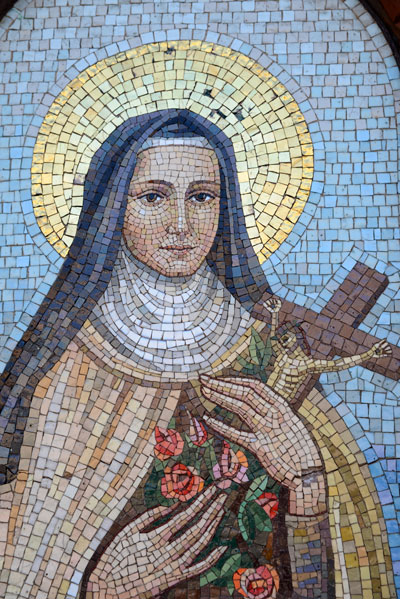
Mary was a catechist. With St. Joseph her husband, she introduced Jesus to the rites and statutes of the Law of Moses, prayed the Psalms, and taught him the history of Israel. Jesus learned from Mary and Joseph to attend the Sabbath services at the local synagogue and to travel once a year to the Temple of Jerusalem to celebrate the Passover.
Mary in the Bible:
All that is known of Mary is found in the Bible, specifically in the Gospels and in the Acts of the Apostles. She played a vital role in salvation history and committed her life to her family, making a home for Jesus and Joseph. As the Catechism tells us, “Christ chose to be born and grow up in the bosom of the holy family of Joseph and Mary. The Church is nothing other than “the family of God.” (CCC, 1655)
The following are New Testament texts that include some reference to Mary. Select one or more texts and reflect on their meaning for your own life as a disciple.
- Events surrounding the birth of Jesus: Matthew 1:1-2:23 and Luke 1:5-2:52
- Mary during the public ministry of Jesus: Mark 3:20-35, Matthew 12:46-50, Luke 8:19-21; 11:27-28
- Mary in the gospel of John: John 2: 1-12, John 19: 25-27
- Mary and the Church: Acts 1: 6-14
Do we contemplate and ponder the spiritual events in our lives? Do we act quickly and obediently to God’s call in our lives? Do we model faithful Christianity?
Activities for the Classroom:
Have students look up and read one or more of the New Testament texts in which Mary plays a role. You could also print out the readings ahead of time and assign small groups to read the Scripture passage silently. For younger students, tell them the story aloud. Ask: What did Mary do in this story?
Ideas for prayer in honor of Mary for your classroom and at home:
- Create a special prayer space with an icon or image of Mary. It is lovely to add flowers to the table.
- Pray the Hail Mary or a decade of the rosary each day during the month of May.
- Make a wreath or crown for Mary and add it to your prayer space.
- Engage students in offering this prayer service honoring Mary, from Catholic Resources.
- For more activities for all grade levels, see these additional free resources from RCL Benziger, Mary, Our Lady.
 About the Author
Dr. Lauri Przybysz specializes in equipping families to live their vocation to be domestic churches and signs of God’s love. Lauri received the Doctor of Ministry from the Catholic University of America, and she has been both a Catholic middle school religion teacher and a faith formation coordinator at the archdiocesan and parish levels. She is the mother of six children and grandmother of 21.
About the Author
Dr. Lauri Przybysz specializes in equipping families to live their vocation to be domestic churches and signs of God’s love. Lauri received the Doctor of Ministry from the Catholic University of America, and she has been both a Catholic middle school religion teacher and a faith formation coordinator at the archdiocesan and parish levels. She is the mother of six children and grandmother of 21.
Spring has sprung! Or at least, it is certainly trying. Spring is a great time to pause and think about the long, cold winter, with Lent and Easter serving as a great reminder of sacrifice, reflection, and rebirth.
Many years ago, the priest at my parish gave a sermon about how God has rolled the stone away for us. Through Good Friday and Easter, we are reminded of Jesus’ life and death, as well as his resurrection. Through this liturgical season, let us also take a moment to pause, notice, and bring new life into our classrooms.
 Here are three ways to bring some joy into your teaching this month:
Here are three ways to bring some joy into your teaching this month:
● Take a breath: when you feel overwhelmed by children’s questions, the emotional load of being a teacher, or whatever else is weighing on you, take three deep breaths in. I like to breathe with a mantra, quietly saying it out loud as I take a deep breath in and take a longer time to exhale. Try this one: I breathe in faith, and I breathe out doubt.
● Get Outside: gray skies are going to clear up, and sunshine will help you put on that happy face! If possible, try to take some lessons outside to enjoy the sun. Research shows many benefits to spending time outdoors, especially on our ability to focus, relax, and even sleep! Keep it simple–having reading groups outdoors, have circle time in nature, or try to plan a picnic!
● Plant a resurrection garden: tending to something, especially plants, can help us relieve stress and also can help children build empathy. So much learning can happen in the garden – math, science, literacy, language, oh my! Grabbing a planter, some rocks, grass seeds, and sand can help you illustrate this Story of God’s Love with a garden you can care for as a class. A quick google search can give you ideas of how to set yours up!
Here is my gentle reminder to you: self-care is more than just the basic daily needs you have. Self-care isn’t just a hot shower every day or a nourishing meal. Those should be considered your basic needs.
Think about self-care as your bag of tricks to help you fill your own cup, whether that is a hobby, connecting with a friend, making time to journal or pray every day, or finding strategies that you can rely on when you feel overwhelmed.
Most importantly, self-care is not selfish. Caring for children involves:
• Internalizing their feelings.
• Carrying their worries with them.
• Finding ways to answer their sometimes big questions.
You cannot pour from an empty cup, and doing so can take the joy out of teaching. Remember to make time for you to connect with yourself, with your faith, and you will be surprised at how you can care for others.
 About the Author
About the AuthorAmy S. Kronberg is an early learning consultant and adjunct professor at the University of Dayton. Mrs. Kronberg began her work in early childhood education at the University of Michigan, Dearborn Early Childhood Education Center, where she learned about the Reggio Emilia philosophy, child-centered curriculum, and playful learning environments. She moved to Dayton in 2013 to complete her Masters of Science in Education, studying early childhood leadership and advocacy so she could learn to support children and families in understanding the value of and celebrating play. She is currently all but dissertation in Educational Leadership at the University of Dayton. She specializes in early learning consulting for local nonprofits, infant and toddler learning, and social-emotional development.
As a child, one of my favorite images was a painting by Carl Bloch of Jesus in the Garden of Gethsemane being comforted by an angel. It hung on my bedroom wall and always made me feel better when I was sad or worried. I thought it was awesome that Jesus had his own angel as a friend. It was understandable since he was the son of God after all, but I never considered that Jesus needed the comfort of an angel because he was also human – like me.
It was a happy lesson when I learned that everyone has their own guardian angel and memorized the lovely little prayer my religion teacher taught us: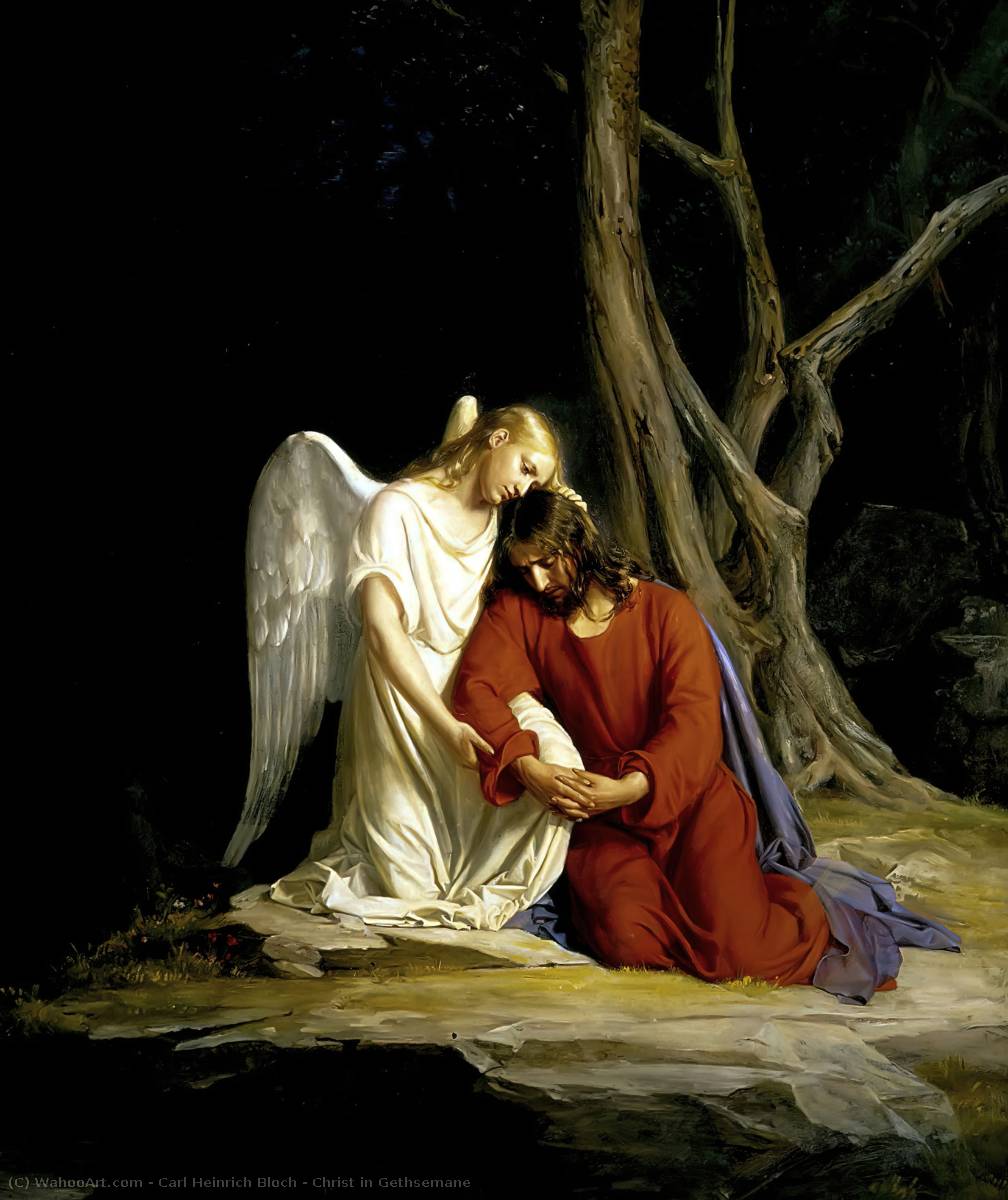
"Angel of God, my guardian dear, to whom God's love commits me here. Ever this day be at my side, to light, to guard, to rule, to guide. Amen."
It's a prayer I still pray as an adult.
The Agony in the Garden is one of four events in the life of Jesus that is remembered on Holy Thursday. During this night preceding his death, his closest friends, a few of the Apostles, fell asleep while Jesus prayed. Only the angel was present to him.
What does the Church teach? The Catechism of the Catholic Church teaches that "from infancy to death human life is surrounded by their [angels'] watchful care and intercession. Beside each believer stands an angel as protector and shepherd leading him to life." (CCC, n. 336).
Take advantage of the Easter season to teach or reinforce your teaching students about the role of angels, especially guardian angels. Include the story of Jesus, who was strengthened by an angel, as he faced suffering and death.
Talk to your students about angels from two perspectives – when they help us in ways we want and when we don't feel they are helping us. Sometimes they protect us from being hurt, and other times they do not. It's important for children to understand that angels' most important role is to strengthen our relationship with God, pray for us, and help us rely on the Gifts of the Holy Spirit.
Adopt a guardian angel prayer for your classroom and pray it with your young students: "Angel sent by God to guide me, be my light and walk beside me; be my guardian and protect me; on the paths of life direct me. Amen."
For older students and teachers, consider the Prayer to the Angel of Gethsemane when praying for those who are suffering or those who are taking care of them:
"O Angel of Gethsemane, chosen by the Father
to bring strength and consolation to Jesus during His agony,
I ask you to be with me now as I keep watch over my loved one who is sick and suffering.
Help me to offer my best care, love and protection to this child of God.
May my words and my touch be filled with gentleness, my presence bring comfort, and my prayers bring rest and healing sleep.
Do what I cannot do, O loving Angel, to bring healing and strength to soul and body, according to the Father's will. Amen."
To read more about angels in the Catholic tradition, go to the blog article - Honoring the Angels | RCL Benziger.
For an additional prayer resource, consider, Our Family Prays. This collection of rituals, blessings, prayers, and traditions meant to encourage and inspire makes a great gift for parents or families as a help to keep prayer at the heart of the home. It's also an excellent resource for teachers, organized by the seasons of the liturgical year and including religious traditions and celebrations worldwide.
Editorial credit: Nancy Bauer/Shutterstock.com for the stained glass image
Editorial credit: Carl Heinrich Bloch/public domain work of art (https://commons.wikimedia.org/wiki/File:Carl_Heinrich_Bloch_-_Gethsemane.jpg)

About the Author
Mary Regina Morrell, mother of six and grandmother to nine, is a Catholic journalist, author, and syndicated columnist who has served the dioceses of Metuchen and Trenton, New Jersey, and RENEW International in the areas of catechesis and communication.
This activity celebrates the family and friends who support and care for us, imagined as a Tree of Life. It would be a fun activity during springtime, Eastertide or part of your Earth Day celebrations. Our families and friends make up our environment in which we can grow and thrive, like trees in a forest. As in those bountiful forests, God provides our families with all that they need to be strong. This activity can appeal to children of all ages.
 Review the parts of a tree: roots, trunk, branches, and leaves.
Review the parts of a tree: roots, trunk, branches, and leaves. - Our roots are those people who have gone before us—the people in our past who started our families, like our grandparents, saints, etc.
- Our trunk is the people who give us support every day—the people in our present who help our family, like our godparents, family friends, teachers, priests, brothers, sisters, deacons, lay ministers, etc.
- Our branches symbolize us reaching out to the world, an important part of keeping us strong—the gifts that we share with the world, like musical gifts and talents or our Catholic faith. As we reach out like branches, we are working towards a future with God.
- Just as God sends water and sun for the tree to grow, God’s creation also helps us to be strong. Everything around us from the trees to the ocean is an important part of nurturing our faith and trust in God.
Instructions: Each student receives a picture of a tree without any leaves, a number of paper leaves about 3 inches wide (triangles will work), and a form or paper on which to write their answers to the following questions:
- Print your own name under the “tree” illustration.
- Think of names of people that helped you to feel loved and cared for. Write a name on one of the leaves. Glue it on your “tree.” You may add more names on additional leaves.
- Name the people who currently are positive influences on you. Write them on other leaves.
- Identify the gifts that you have that you are able to share with others, now and in the future. Write them on one or more leaves.
- Write the gifts of creation for which you have appreciation. Write the ideas on leaves. Paste all your leaves on the tree page.
Gather the students for a gratitude prayer. During the prayer, invite students to share ONE item from their leaves with the group.
Close the activity with a prayer of thanksgiving: “We thank you, God Our Creator, for all of the people and gifts you have given us to help us grow, and for the beauty of nature that we recall when we see these Trees of Life. Amen.”
Look for free downloadable and printable resources are available for Earth Day in Catholic Resources:
Dr. Lauri Przybysz specializes in equipping families to live their vocation to be domestic churches and signs of God’s love. Lauri received the Doctor of Ministry from the Catholic University of America, and she has been both a Catholic middle school religion teacher and a faith formation coordinator at the archdiocesan and parish levels. She is the mother of six children and grandmother of 21
We begin with the knowledge that the Easter Season is the most important liturgical time in the Church, including the Easter Vigil, which St. Augustine referred to as “the Mother of all Vigils,” and Easter Sunday, the greatest Sunday of the Church year. But there is much more, and it’s something we often overlook. The Easter Season lasts 50 days, seven weeks plus Pentecost, and is meant to continue the rejoicing of the Resurrection after the long 40 days of Lent. By consciously celebrating the joy and new life of Easter for 50 days, we are also nurturing that joy as a part of our daily lives in spite of challenges and adversity, to truly become Easter people, active witnesses to a faith that transforms even death. Since lesson plans are generally filled to the brim, now is the time to plan ahead to help students engage in the seven weeks of Easter. Here are some simple suggestions: Keep Easter liturgical colors – Keep the cloths and accessories on your prayer tables white, with accents of gold, for the seven weeks of the Easter season. Add flowers around holy pictures and statues. Students see these throughout the day, not just during religion class. It’s a reminder that our Catholic faith is always with us, no matter what we are doing. Display the Primary Easter Symbol – The Christ Candle (Easter or Paschal Candle), represents the light of Christ dispelling the darkness of sin and death. Keep a Christ Candle on your prayer table, either purchased or made. A white pillar candle is perfect, wax or flameless. A red cross may be added to the candle. Use it for discussions about the importance of light in our lives. Feasting not Fasting –Jesus taught, “As long as they have the bridegroom with them, they cannot fast.” The Season of Easter is a time to enjoy the blessing of food in contrast to the fasting of Lent. If possible, set aside a window of time one day a week where children can enjoy a special Easter food, like hot cross buns or large pretzels (little arms crossed in prayer). Solicit suggestions from parents. Embrace Easter Attitudes – Easter is a time of rebirth, transformation, renewal, hope and joy. These are attitudes that grow when they are nurtured. No lessons needed, just encouragement to be joyful and hopeful, and a nudge to see opportunities for growth, renewal and change. Or pick a different Easter attitude for a weekly classroom theme. Ask children for suggestions on how to bring the themes alive. Proclaim Alleluia! – With the Easter Vigil the Alleluia is once again sung or prayed during Mass. Give your students an opportunity to “Praise God,” which is what Alleluia means, by adding this brief prayer at the beginning or end of the school day: “This is the day the Lord has made; let us be glad and rejoice in it.” R. Alleluia, alleluia. To further enrich your Easter lessons, visit RCL Benziger’s Easter Resources for free downloadable prayers, activities, and suggestions to help you keep the Easter celebration going.
Mary Regina Morrell, mother of six and grandmother to nine, is a Catholic journalist, author, and syndicated columnist who has served the dioceses of Metuchen and Trenton, New Jersey, and RENEW International in the areas of catechesis and communication.
Pagination
Latest
Categories
Archives
- February 2015 (2)
- March 2015 (2)
- April 2015 (5)
- May 2015 (3)
- June 2015 (6)
- July 2015 (3)
- August 2015 (5)
- September 2015 (5)
- October 2015 (4)
- November 2015 (2)
- December 2015 (1)
- February 2016 (2)
- March 2016 (1)
- April 2016 (2)
- May 2016 (2)
- July 2016 (2)
- August 2016 (2)
- September 2016 (1)
- October 2016 (5)
- November 2016 (1)
- December 2016 (3)
- January 2017 (2)
- February 2017 (3)
- March 2017 (2)
- April 2017 (1)
- June 2017 (2)
- July 2017 (2)
- August 2017 (1)
- April 2018 (1)
- October 2018 (2)
- December 2018 (2)
- February 2019 (3)
- March 2019 (2)
- April 2019 (2)
- May 2019 (3)
- June 2019 (1)
- July 2019 (16)
- August 2019 (8)
- March 2020 (4)
- April 2020 (6)
- May 2020 (8)
- June 2020 (7)
- July 2020 (5)
- August 2020 (7)
- September 2020 (4)
- October 2020 (5)
- November 2020 (9)
- December 2020 (11)
- January 2021 (10)
- February 2021 (8)
- March 2021 (5)
- April 2021 (4)
- May 2021 (4)
- June 2021 (5)
- July 2021 (2)
- August 2021 (3)
- September 2021 (4)
- October 2021 (4)
- November 2021 (2)
- December 2021 (5)
- January 2022 (4)
- February 2022 (4)
- March 2022 (9)
- April 2022 (7)
- May 2022 (9)
- June 2022 (12)
- July 2022 (7)
- August 2022 (10)
- September 2022 (9)
- October 2022 (11)
- November 2022 (8)
- December 2022 (7)
- January 2023 (2)
- February 2023 (10)
- March 2023 (9)
- April 2023 (10)
- May 2023 (8)
- June 2023 (4)
- July 2023 (3)
- August 2023 (2)
